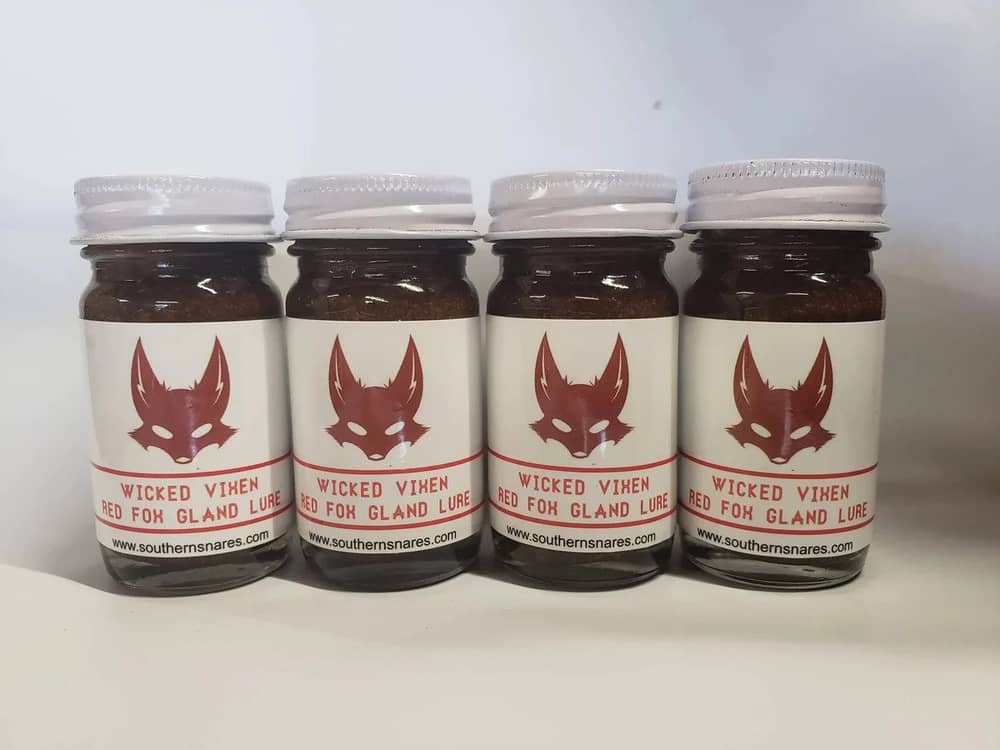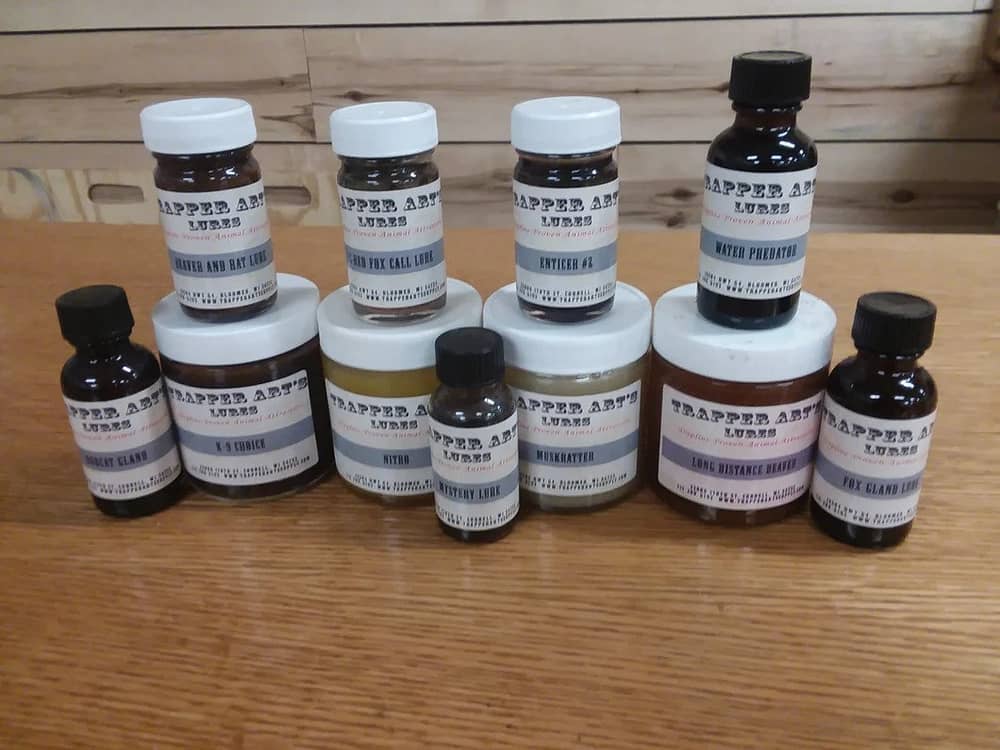Hunters frequently use fox gland lure to entice animals, particularly foxes, coyotes, and bobcats. So, how to use fox gland lure in the right way?
A fox’s musk gland is used to create the scent-based lure known as fox gland lure. To make a strong and alluring aroma for predators, they combine it with other components. To draw the intended animal, the lure is often put on bait or in a trap.
Hunters must be familiar with the behavior and habitat of the animal they are pursuing in order to employ fox gland lure efficiently. Knowing how to utilize fox gland lure properly will significantly improve a hunter’s chances of success. We will now work together to learn how to employ the fox gland lure.
What Is Fox Gland Lure?
Fox gland lure is a kind of animal scent lure that hunters use to entice foxes, coyotes, and other predators. It is created by a fox’s musk gland, which is found close to the animal’s tail. Other animals may sense the gland’s strong, pungent odor from great distances.
The musk gland from a recently killed fox is frequently collected by hunters to construct fox gland lures. To make a stronger aroma, they will combine it with other components like animal urine or glandular secretions. The mixture is then fermented for a few weeks to increase its potency.
Fox gland lure is utilized not just for hunting but also for research and academic projects. Researchers can follow the scent to study how predators in the wild travel and behave. Following that, methods for managing animal populations and preserving endangered species can be developed using this knowledge.
Is Fox Gland Lure Effective?
A fox’s musk gland releases a potent aroma that other animals can smell from a great distance away. Fox gland lure has the ability to imitate the scent of a nearby prey when combined with additional substances and aged properly.
However, a number of variables affect how well fox gland lure works. They are the species of animal being targeted, the meteorological conditions, and the habitat of the animal. In order to identify the optimal lure and technique combination for their specific hunting circumstance, hunters frequently have to experiment.
It’s also critical to remember that employing fox gland lure and other hunting strategies can spark debate. Some claim that they can injure and suffer wildlife needlessly. Using a fox gland lure or any other hunting equipment requires hunters to follow certain ethical and legal rules.
Using a fox gland lure ethically and responsibly can make it a useful hunting tool. Numerous variables affect its performance, therefore it’s crucial to approach hunting techniques with prudence and respect for nature.
How To Use Fox Gland Lure?

It takes a detailed grasp of the animal, its behavior, and its habitat to use fox gland lure effectively. Here are some pointers for making the most of fox gland lure:
Pick The Appropriate Lure
The variety of fox gland lures is extensive. It’s crucial to select the one that is appropriate for the hunting situation and the sort of animal being pursued. Other lures are more powerful than others, and others are made to work best in particular environments like habitats or climates.
Apply The Lure Properly
Use gloves when applying the lure to avoid contaminating it with the smell of human hands. Make sure to place the lure in a location where the animal is likely to encounter it when using the lure as a bait or in a trap. Avoid putting the lure directly on your clothing or equipment as this can contaminate the aroma.
Consider Wind Direction
The efficiency of the lure can be significantly influenced by the wind’s direction. The lure’s fragrance should ideally be carried to the animal by the wind, which should be blowing in their direction. The lure’s potency may be diminished if the wind is blowing in the opposite direction and carries the scent away from the animal.
Use Under The Proper Circumstances
The best weather for fox gland lure is cool, dry weather. The lure’s aroma may not go as far in hot, humid weather, and it may gradually lose strength.
Follow The Law And Moral Principles
It’s crucial to abide by moral and legal rules when utilizing fox gland lure. This protects species from injury and helps the ecosystem remain sustainable. Observe all local rules and ordinances, and only employ the lure in a morally and sensibly appropriate way.
Hunters can improve their chances of success while also showing respect for nature by using this advice.
What Are Disadvantages When Using Fox Gland Lure?
Although fox gland lure might be a useful hunting weapon, there are also some drawbacks and safety issues related to its use. Here are a few examples:
Controversy
It can be debatable whether or not to employ fox gland lure or other hunting strategies. Some claim that they can injure and afflict wildlife unnecessarily. Social unrest and unfavorable opinions of hunters and hunting methods may result from this topic.
Scent Contamination
An improper application of the lure may cause fragrance pollution. It might even make the bait less effective or drive the animal away. It’s important for hunters to take care not to contaminate the lure with their own or other unnatural scents.
Minimal Efficiency
The species of animal being lured, the environment, and the habitat all affect the fox gland lure’s effectiveness. It might not work in all circumstances or with all animal species.
Sustainabilities Issues
The ecosystem’s balance could be upset or wildlife populations could be harmed if fox gland lure is overused or utilized carelessly.
Legal Limitations
The use of fox gland lures or other hunting tools may be prohibited or banned in some areas. Hunting is subject to local laws, which hunters must be aware of and follow.
Generally speaking, hunters need to understand how to use it ethically and with consideration for the environment. Additionally, they must to be aware of any potential downsides and try to use it morally and responsibly.
What Is The Best Lure For Fox?

Hunting enthusiasts can utilize some of the popular and reliable lures listed below to achieve success:
Fox Gland Lure
This particular lure is created using a fox’s musk gland and is intended to resemble the fragrance of nearby prey or a prospective mate. The breeding season, when foxes are more likely to be looking for a partner, is when it can be particularly effective.
Call Lures
These lures are made to sound like a fox in distress or a prey animal, which can draw other foxes in the area. They may be utilized independently or in conjunction with other lures.
Food Lures
Since foxes are opportunistic hunters and scavengers, food lures might draw them in. These lures may consist of fake baits made to resemble the aroma of food or real bait like fish, chicken, or carrion.
Urine Lures
These fox urine-based lures might be useful for luring additional foxes to a hunting or trapping spot.
Red Fox Gland Lure
The musk gland of a red fox is used to make a type of bait that is specifically created for red foxes. The breeding season, when red foxes are more active and aggressive, can be a time when it is particularly effective.
Final Thoughts
In conclusion, when used properly, fox gland lure can be an efficient tool for fox hunting and fox trapping. Hunters can improve their odds of success while limiting injury to wildlife and preserving the ecosystem’s equilibrium by using fox gland lure with discretion. We sincerely hope that this information about how to use fox gland lure will be more helpful to you.

